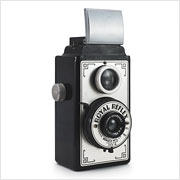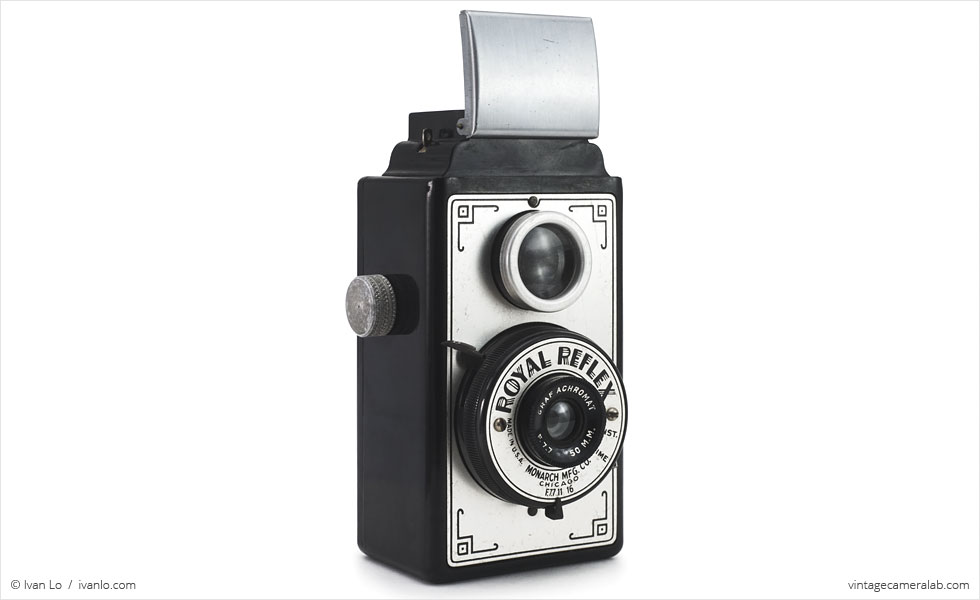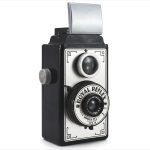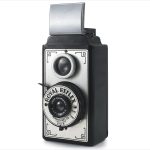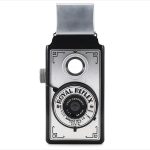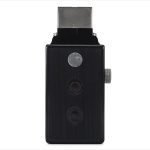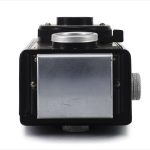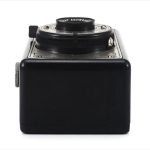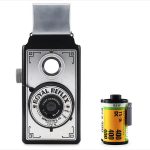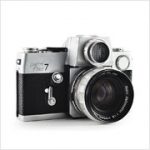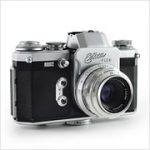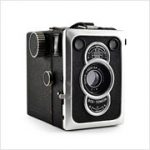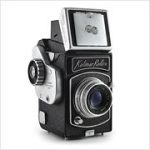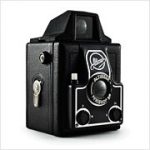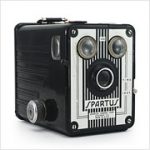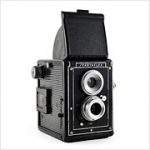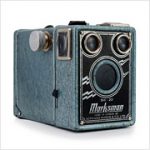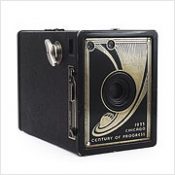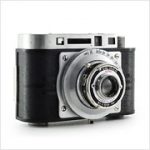Monarch Royal Reflex Specifications
| Manufacturer: | Monarch Mfg. Co. |
| Origin: | USA |
| Made in: | Chicago, IL, USA |
| Introduced: | 1939 |
| Type: | Box, Viewfinder |
| Format: | 127 Film |
| Dimensions: | 6.7 x 13.6 x 6.3 cm |
| 6.7 x 16 x 6.3 cm (viewfinder open) |
Monarch Royal Reflex Overview
The Monarch Royal Reflex is a pseudo-TLR (a box camera that superficially resembles a twin lens reflex camera) made of an early plastic named Bakelite and introduced in 1939 by the Monarch Manufacturing Company. Monarch (sometimes also spelled “Monarck”), was just one of a many names that made up the Chicago Cluster—a collection of Chicago-based camera brands including Spartus, Acro, and Falcon which appear to be multiple fronts for a single manufacturer. As such, the Monarch Royal Reflex was also sold under different names such as the Monarch Kando Reflex, Remington Flex-Master, and Pickwick Reflex. Its basic design also exists in the form of models like the Metropolitan Clix-O-Flex, Metropolitan Metro-Flex, and the aluminum-bodied Utility Falcon-Flex.
Like most box cameras, the controls of the Monarch Royal Reflex are relatively simple. The 50mm f/7.7 Graf Achromat lens has three preset aperture settings: f/7.7, f/11, and f/16 which can be selected with the small metal tab at the six o’clock position of the lens barrel. The shutter lever at ten o’clock works in conjunction with a metal tab at four which selects one of two shutter speeds: Instant (approximately 1/60 of a second) and Time (the shutter stays open for as long as the shutter button is held down).
In order to compose a photograph, the viewfinder hood on the Royal Reflex’s top plate must be flipped up to reveal a waist-level finder which shows the view through the top lens of the camera. Once the photograph is taken, the dual red windows on the back plate can be used alongside the knob on the user’s right-hand side of the camera advances the film to the next frame. When the roll of film is finished, the metal knob above the red windows can be unscrewed to remove the entire back plate for unloading and reloading.
My example is good but far from perfect. There are scratches all over the front plate, the viewfinder mirror is loose, and there’s a substantial chip in the corner of the film door. Even though the Monarch Royal Reflex is cheaply made and just one of many clones, this camera still has an undeniable charm to me. Besides, I’ll collect pretty much any camera that was made in Chicago.
Find your very own Monarch Royal Reflex on eBay.
McKeown, James M. and Joan C. McKeown’s Price Guide to Antique and Classic Cameras, 2001-2002. (Grantsburg, WI, USA: Centennial Photo Service, 2001), p 459, 480, 650.
